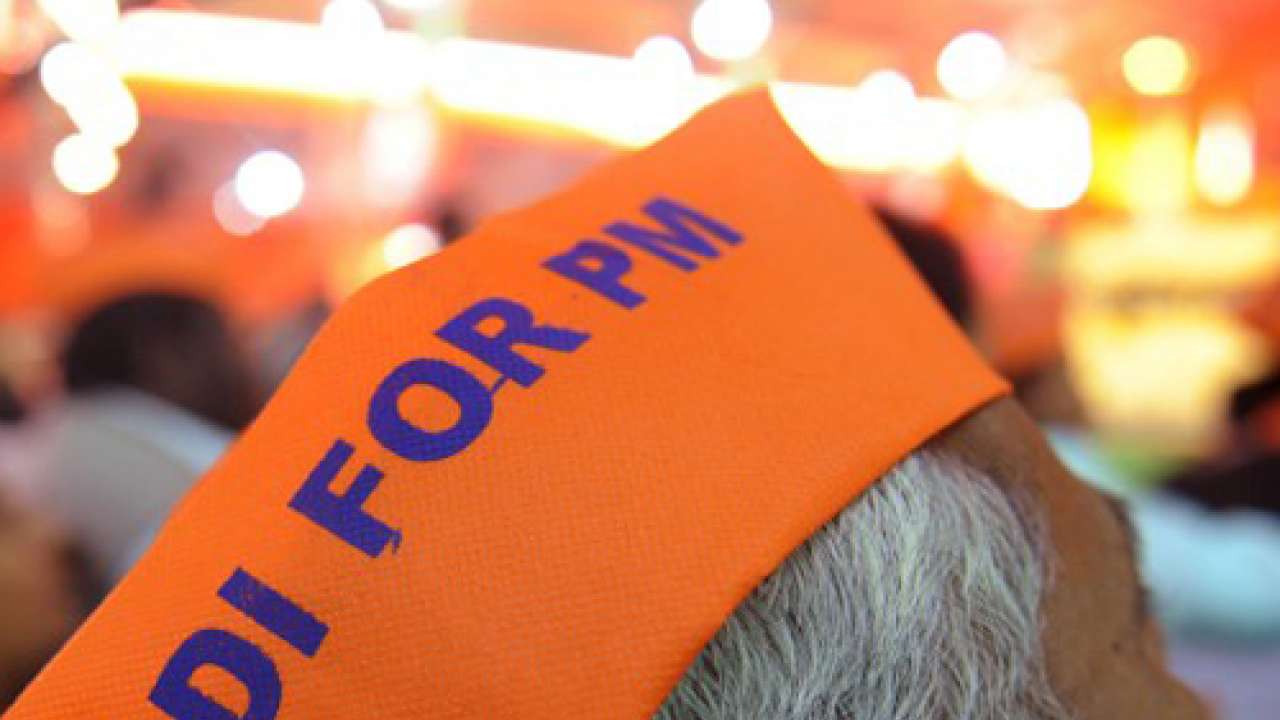
Unable to fathom the gigantic tide in support for Narendra Modi in the many media outlets, urban middle-classes and the youth, many liberal-left journals and critics have resorted to sheepish attempts at denouncing the BJP campaign for turning a “parliamentary” election into a “presidential” one. This includes the Third Front, who would come up with any raison d’etre to justify the incoherent intermingling of parties based on caste, Marx and what-not; the Crown Prince leading the charge at the other side of battlefield and also the prestigious Outlook magazine that ran a cover-story last week on the ‘presidential’ nature of Modi’s campaign (with Modi’s face in the Lincoln Memorial).
Rarely since Indira Gandhi has any politician been able to dominate the national space with such adroitness as Narendra Modi. He has successfully been able to exploit the drastic rise in expectations and aspirations, especially in the recent economic boom’s unfed children – working age adults, who want a job and low inflation. And thanks to a successful campaign of mass media – and a record reach of the mass media – more than 80% of Indians are said to have easy access to television for the first time in the nation’s history – he has become an embodiment of their hopes.
You couple this with an outgoing regime, whose prime minister doesn’t deem it important to regularly engage the public, and who is propped up by a Crown Prince who sees fit in providing only two televised interviews in 10 years, you have a great narrative of the able defeating the incapable, the worthy finishing the unworthy.
However for Modi’s critics, playing this narrative is simply bad play. Essentially, the logic goes that, in a parliamentary democracy, voters are ‘meant’ to decide their vote on the basis of the local candidate and his allegiances and performances. These elected legislators should then get together and do what Rahul Gandhi claims his party shall do – select the prime minister. Yet, this view is deeply misguided.
For one, an overwhelming percentage of established parliamentary democracies across the world behave in ways and manners that contradict these self-appointed constitutional experts. In Britain, for instance, the 1997 Labour landslide had much to do with Tony Blair’s exuberance, charm and the breath of freshness he injected in his party through the New Labour campaign. Similarly, in Japan, another parliamentary democracy, the rout of the Liberal Democratic Party in 2010 was largely due to a nation-wide delusion with the party that had been in power for over 50 years.
Second, the key administrative and political decisions, and the shaping of national agenda is a work of the few who have a national profile and comprise the “core” groups of their parties. This suggests that such few are the ones taking the final decisions on the defence, foreign policy and the national economic policy of India – all of which have an impact on safety, and prosperity of Indians. Again in Westminster, the mother of Parliaments, the Opposition even has a Shadow Cabinet ready to exhibit what the potential alternative may look like.
It is only natural for voters to demand the right to know who this exclusive clique would include. Therefore, every voter voting for the BJP, with Narendra Modi as the possible prime minister, is in the right mind to do so. More importantly, the BJP’s anointing of Modi as a prime ministerial candidate is a responsible step. This makes very clear to the voters who the chief executive will be should they put their weight behind the party.
Rahul Gandhi may oppose this practice, but he forgets that his father, his grandmother and his great-grandfather all fought elections as prime ministerial candidates. Nehru was considered a huge “banyan tree”, under whose shadow nothing grows, and a key slogan of Congress sycophants during his daughter’s tenure was “India is Indira, Indira is India”.
Lastly, projecting the prime ministerial candidate upfront would ensure the destruction of a dangerous phenomenon in Indian politics – that of the institution of a political party taking precedence over the institution of state. This perhaps is one of the most ruinous legacies of the UPA regime. As Sanjaya Baru makes clear in his latest book, “no one in Dr Singh’s council of ministers seemed to feel that he owed his position, rank or portfolio to the PM”.
This meant that cabinet ministers could skip the weekly cabinet meetings if the agenda did not suit them, and Pranab Mukherjee could choose not to brief the prime minister until three days after a foreign visit. And perhaps, most depressingly, the Congress “Core Group” – comprising Sonia Gandhi, Ahmed Patel and company – took precedence over the Cabinet Committee on Political Affairs, as the premier decision-making body.
By clearly conveying that the leading campaigner, the leading vote-getter and increasingly the most powerful person in the BJP establishment is also the prime ministerial candidate, the BJP may avoid the “dual power-centre” problem, which has invited confusion, logjam and eventually ridicule for the UPA regime.
Thus, when it comes to elections to national assemblies, most mature “parliamentary” polls inevitably gravitate towards nation-wide issues and nation-wide figures.
Putting aside the pros and cons of a possible Modi government, this happening in India after almost two decades of Mandal politics, caste mobilisations and regional fragmentation, should perhaps be welcomed, since it underscores a growth in the middle-class and a population in communication with each other in an unprecedented manner.
Akshat Khandelwal tweets at @akshat_khan.